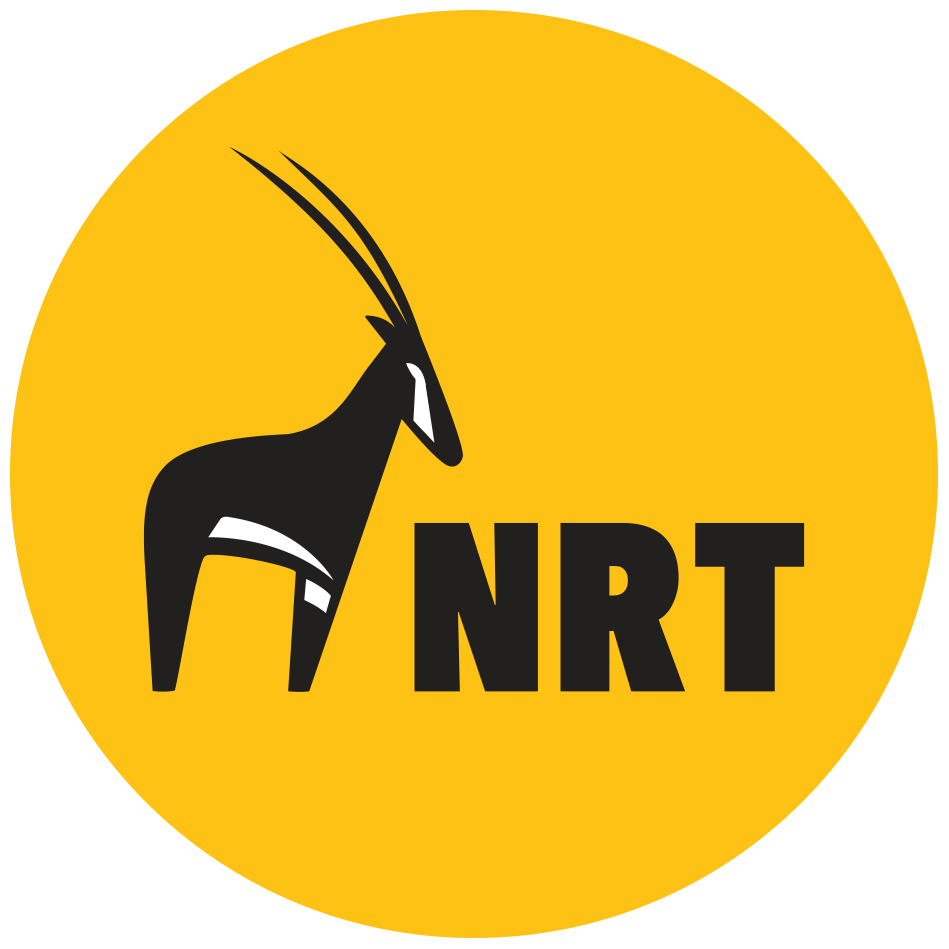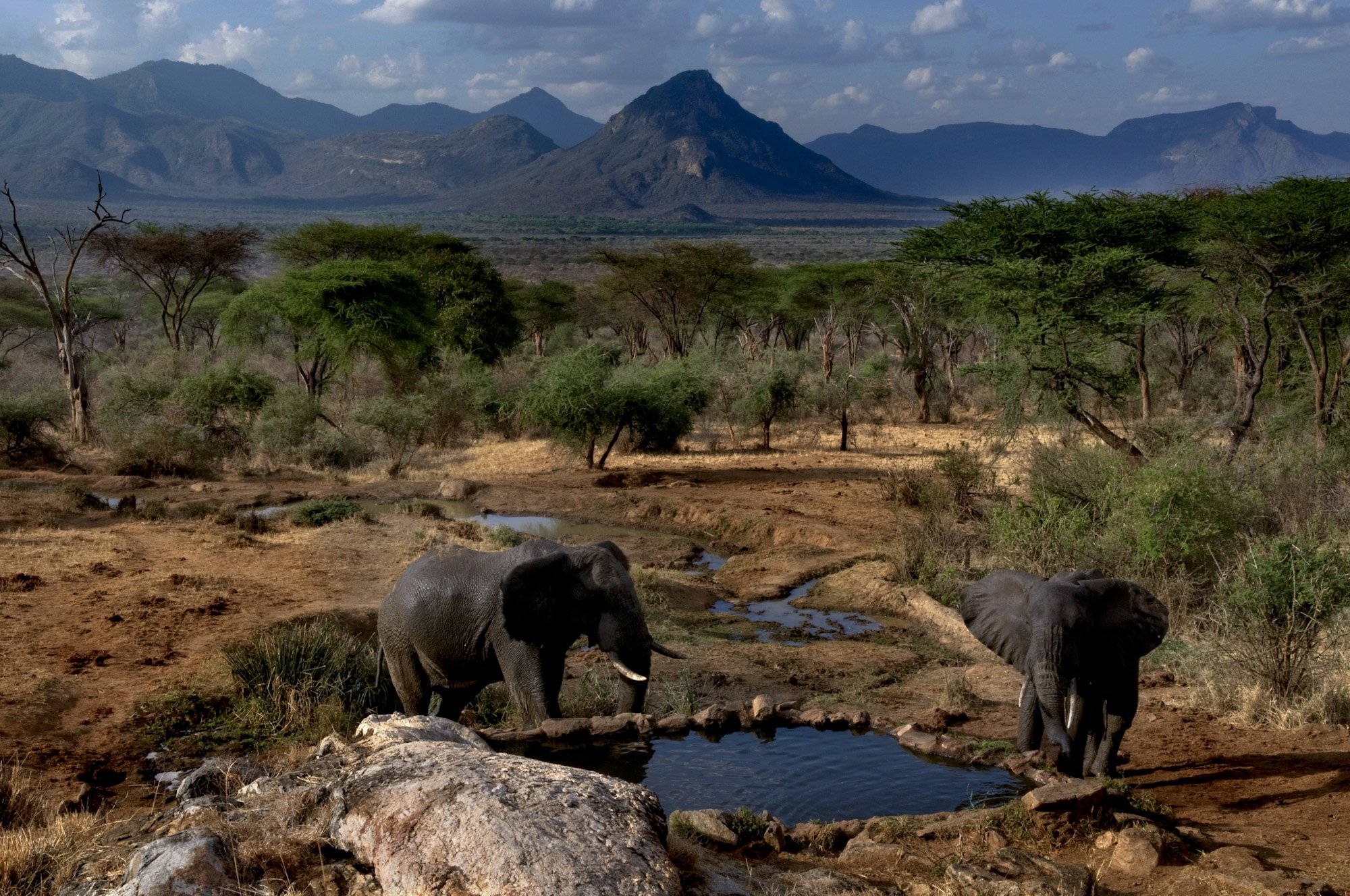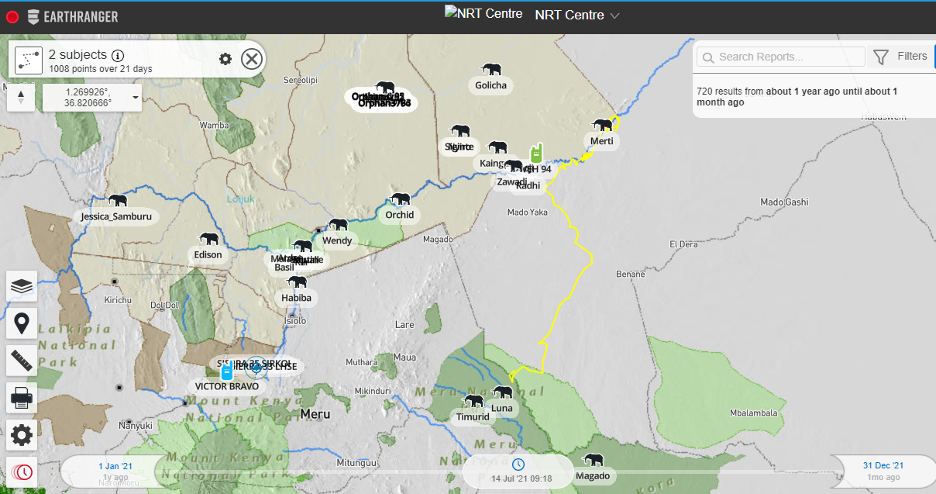Data Shows Elephants' Habitats are Expanding
Building on the success of Koya, a female elephant fitted with a GPS monitoring collar and her family's journey, which earlier demonstrated a great connectivity between Samburu and Marsabit in Northern Kenya, recent data shows that efforts by indigenous communities to safeguard elephant ranges and eliminate threats such as ivory poaching are paying off.
According to collared elephants data, the jumbos have expanded their range and are utilising the Lorian swamp in the East, with herds moving further down the lower Ewaso river and more regular movement between Marsabit and Meru National Parks, as depicted below by a collared elephant named Merti.
Due to poaching, there were fewer elephants in the lower Ewaso in the past, but now, thanks to data, we can see a robust population spending more time within the ecosystem and formerly used elephant habitats are now opening up.
Collared elephant named Merti tracks, in yellow.
Community conservancies on the frontiers of Isiolo, Samburu, and Marsabit are providing this vital space thanks to peace, security, increased awareness, good habitat, community, government, and private efforts.
These conservancies are increasingly being used as elephant habitat, allowing for the development and expansion of elephant ranges. While ivory poaching is on the decline, human-elephant conflict is on the rise due to limited resources such as water and dry season forage causing competition.
"With the development of the new conservancies in Isiolo, elephant range expansion will be a key part of the picture in the coming 10-15 years," says Kieran Avery, NRT's Director of Resource Management.
NRT member community conservancies have been striving to improve governance, peace efforts, and sustainable natural resource management over the past 15 years.
Collared elephant named Luna tracks, in yellow.
Since 2012, working with the Kenya Wildlife Service (KWS), Save the Elephants, and other partners to improve wildlife and human security, there has been a 96% reduction in elephants killed for ivory in NRT landscape.
Through the connectivity project, we’re creating a link between Marsabit and Meru National Parks through community conservancies that connects the two parks to ensure the historical elephant corridors and migratory routes are maintained.
The impact of community conservancies on the landscapes, wildlife and people of northern Kenya is possible through the core programme support of USAID, The Nature Conservancy and DANIDA, alongside many others listed on our partners page.
Marsabit and Isiolo continues to be a special focus for community-led elephant conservation efforts, and support from the French Facility for Global Environment (FFEM), Agence Française de Développement (AFD) and Rainforest Trust is enabling the Marsabit community conservancies to improve ecological connectivity, rangeland restoration and peace efforts for people and wildlife here.



